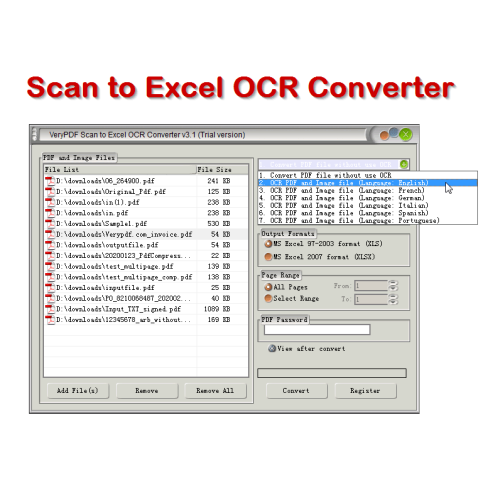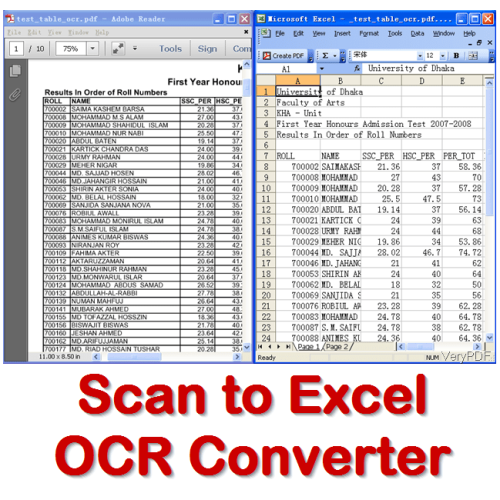
With this program, the conversion process is straightforward, only taking a couple of minutes.
#OCR SCANNER SOFTWARE EXCEL FREE#
Regardless of whether you use one of these free solutions or a commercial product, there are numerous ways to get OCR data into Excel.PDFelement offers a top-notch feature for converting scanned documents to Excel. It also supports languages other than English. This tool can output data to Excel or to any of several other formats. Best of all, the service is both free and anonymous.Īnother potential option is Convertio, another free online tool for performing OCR on an image file. It can perform OCR on an image and then export the data to Word, Excel or to a text file.
#OCR SCANNER SOFTWARE EXCEL INSTALL#
This is a Web-based tool, which means that you don't have to install anything to use it. One of the tools that you can use to accomplish this is Easy PDF. You could conceivably make a screen-capture of any data source, save the screen-capture as an image file, then extract the data and import it into Excel. The nice thing about this approach is that it does not limit you to only capturing data using a camera.

In either case, you can then open the spreadsheet on your desktop.Īnother workaround is to use one of the many online services to perform OCR from outside of Excel. After doing so, you can save the spreadsheet to OneDrive, or you can e-mail it to yourself. One workaround is to use your phone to capture the data and store it in a spreadsheet. Regardless, there are some workarounds if you want to import data into the desktop version of Excel. I don't know if Microsoft is planning to add this capability later on, or if it plans to only support photographic data import on mobile platforms. You can see how the process works here.Īs previously mentioned, the desktop version of Excel lacks the ability to import data from a photograph. Once you have reviewed the data, just tap Insert and Excel will place the data into a spreadsheet. For each issue, you can either tap Edit if you need to correct the data, or you can tap Ignore if the data is correct. Before the data is added to the spreadsheet, Excel will tell you which items might be problematic and therefore need to be reviewed. With this process, Microsoft is not only acknowledging the potential for errors to occur, it also helps you identify and correct those errors. Once the rectangle is in the correct position, snap a photograph to capture the data. You can adjust the rectangle's size to include additional data or to exclude data from being imported. Excel will attempt to import any data located inside of this rectangle.

One of the nice things about this process is that Excel draws a red rectangle around the data. At this point, you can take a picture of the data that you want to import. Tapping this icon causes Excel to open the device's camera.


It's the icon that looks like a camera on top of a spreadsheet. Begin by opening Excel on your mobile device and then tap on the Insert Data From Picture icon. The process used for performing this type of data import couldn't be easier. That data can then be read into an Excel spreadsheet. The basic idea is that you can use the device's camera to take a photograph of a document, such as a receipt, and then use OCR to extract data from the photograph. Right now, this capability only exists in mobile versions of Excel (iOS and Android). While I don't expect Microsoft to discontinue its support for normal data entry into Excel, Microsoft recently introduced native optical character recognition (OCR) capabilities into Excel that can be used to import data from a photograph. As you can imagine, Office applications such as Word, Excel and PowerPoint have changed a lot since then.īut even though old versions of Excel - such as Excel 95 - are barely recognizable compared to Excel 2019, there is one thing that hasn't changed: The basic way that you enter data into an Excel spreadsheet today is almost identical to the way it was done 25 years ago. I first started using Microsoft Office way back in the 1990s.


 0 kommentar(er)
0 kommentar(er)
